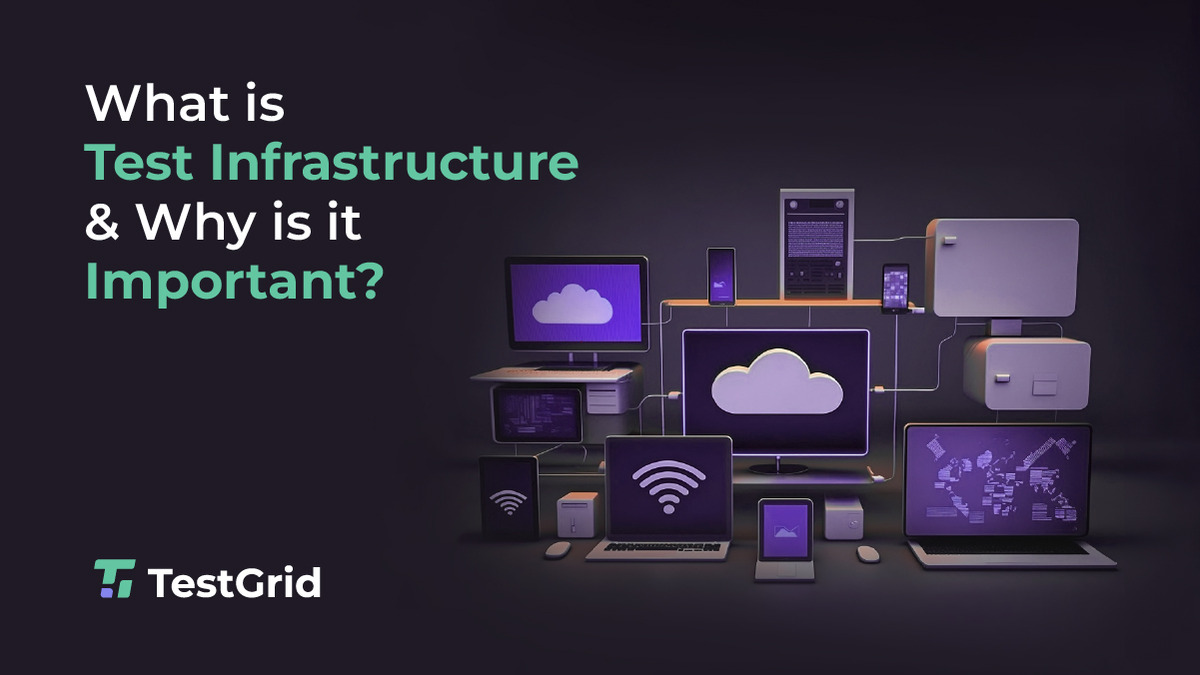
With the demand for applications increasing exponentially, companies are trying to step up their production and release apps quickly. As of June 2023, around 90,000 mobile apps were released through the Google Play Store, as per Statista, testifying how software firms are trying to capitalize on the growing demand. Additionally, with users rejecting apps due to underwhelming performance and user experience, they are trying their best to ensure that every app launched meets all user expectations.
Despite their best efforts, many firms face multiple challenges while testing and developing applications. Consequently, glitches in software are surfacing after release, and many companies are not able to speed up their development process. The main reason for such issues is the lack of an appropriate test infrastructure. This article will explain in detail all you need to know about test infrastructure, including how an optimized test infrastructure can elevate your testing processes.
Test Infrastructure – What Is It?
Test infrastructure comprises the tools, environment, and resources that are required to test applications. It includes even the supporting tools and software used in testing, such as test management or project management tools.
Test infrastructure also relates to the functions, actions, and procedures that enable manual and automated testing. It serves as the foundation for the testing team to write their test cases and provides the execution platform to run them.
Components of a test infrastructure
- Test plan: It is a detailed blueprint containing test strategy, objectives, estimations, schedules, and other resources
- Test environment: All the hardware, software, and networking resources needed to execute the tests are included in this.
- Test data management: It refers to the creation, updating, and maintenance of test data and ensuring it is secure
- Test automation framework: It includes the set of tools used to carry out the automation testing process.
- Test cases: These are set of instructions used to test an application’s functionality
Why Do You Need A Well-Designed Test Infrastructure?
Having an optimized and well-planned test infrastructure can provide these key benefits to companies and their software products:
1. Swifter test execution
With an optimized test infrastructure comprising robust hardware and efficient resource allocation, the time taken to execute automated tests is significantly reduced, enabling faster feedback.
2. Early detection of bugs and reduced failures
An optimized test infrastructure lets you integrate your testing process with your CI/CD pipelines, enabling continuous testing, wherein the application is tested during every stage of development. This helps identify bugs early, provide feedback about them to stakeholders, and resolve them before they turn into serious issues.
3. Accelerated testing speed
A well-designed test infrastructure lets testers run hundreds of tests in parallel, significantly reducing the overall testing time. It eliminates the need to manually execute tests and reduces the time taken to release new products and updates.
4. Scalability
Having a scalable infrastructure that grows in tandem with your testing requirements is essential. Such an infrastructure empowers you to scale your testing environment seamlessly to accommodate larger workloads without any compromises on quality.
5. Accurate and efficient testing
With a well-maintained test infrastructure that provides a stable and reliable environment for testing, you can ensure that the test results are accurate and repeatable.
Choosing The Right Type Of Test Infrastructure For Efficient Testing
While designing a test infrastructure, organizations should consider their unique needs and preferences. With the right test infrastructure, they can improve the software quality, increase test coverage, enhance team productivity, and increase the reliability of their testing processes.
The Three Types Of Test Infrastructure to choose from:
- On-premise Test Infrastructure
In this type of infrastructure, the owner is the organization that is using it. It is ideal for those firms that want more control over their testing environment. Testers can evaluate their apps’ functionality using a variety of physical devices.
- Cloud-based Test Infrastructure
In this type, there is no need to allot or maintain a dedicated space to install physical devices since the infrastructure is cloud-based. It is a reliable and cost-effective solution that offers the flexibility to scale the testing environment up or down as per your evolving testing requirements. You can also get access to a variety of physical devices and browsers for the comprehensive testing of your applications,
- Hybrid test infrastructure
This is a combination of on-premise and cloud-based resources for testing and managing your test environment. It is a suitable option for organizations that prefer the control and customization of an on-premise infrastructure while also deriving the scalability and accessibility of a cloud-based infrastructure.
You need to choose the most suitable test infrastructure based on your organization’s specific needs and your testing team’s capabilities.
Conclusion
Without a doubt, a well-designed and optimized test infrastructure is a must for organizations aiming to speed up their testing processes and deliver responsive software to end-users. When it comes to testing infrastructure, TestGrid is the platform that comes first to mind due to its proven reliability, scalability, and cost-effectiveness.
TestGrid offers three options of test infrastructure for organizations to choose from – Public Cloud, Private Dedicated Cloud, and On-premise Labs.
The platform’s Public Cloud infrastructure offers a plethora of real devices and browsers to perform real device testing on mobiles and web applications across actual user conditions, enabling you to deliver the best possible user experience.
TestGrid’s Dedicated Private Cloud offers greater control over your test environment and lets you choose your devices. Moreover, you can avail of add-on features for your end-to-end testing needs at no extra cost.
The third option, TestGrid’s On-premise Device Lab, offers you the advantage of a dedicated test infrastructure hosted on your premises with greater control over your testing environment.
Whatever your choice, depending on your budget and unique testing needs, with TestGrid, you are assured of higher test efficiency, lower maintenance costs, and faster delivery of your software products to the market.

Tech Hub Digital, a one-stop destination for complete technology-related information.

